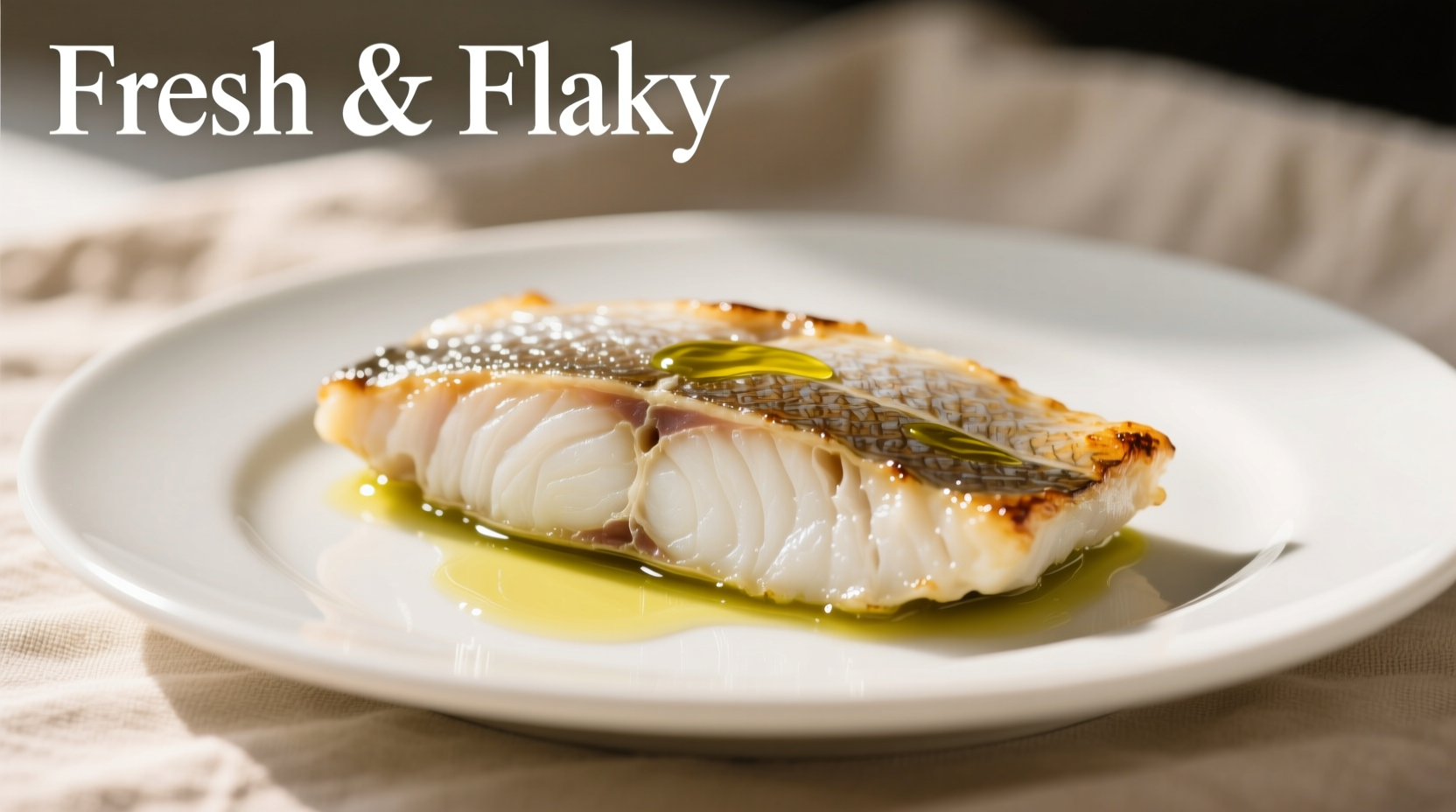Getting the temperature right when cooking cod transforms this delicate white fish from potentially dry and flavorless to perfectly tender and flaky. Whether you're a beginner cook or an experienced home chef, understanding the precise thermal science behind cod preparation ensures restaurant-quality results every time.
The Science Behind Cod's Perfect Temperature
Cod's delicate protein structure responds dramatically to heat. When the internal temperature reaches 120°F (49°C), the proteins begin to coagulate, turning the translucent flesh opaque. At 130°F (54°C), the fish starts to flake. But the sweet spot—where cod achieves ideal texture without losing moisture—occurs at 145°F (63°C).
According to the USDA Food Safety and Inspection Service, this temperature ensures food safety by eliminating potential pathogens while preserving the fish's delicate texture. Cooking beyond 150°F (66°C) triggers excessive moisture loss, resulting in dry, stringy cod.
| Temperature Range | Texture Characteristics | Visual Indicators |
|---|---|---|
| 120-130°F (49-54°C) | Translucent, barely flaking | Shiny appearance, resists flaking |
| 130-140°F (54-60°C) | Moist, beginning to flake | Mostly opaque, slight resistance |
| 145°F (63°C) | Perfectly flaky, moist | Fully opaque, flakes easily |
| 150°F+ (66°C+) | Dry, stringy, rubbery | Chalky appearance, crumbly texture |
Temperature Control by Cooking Method
Different cooking techniques require specific temperature management approaches to achieve that perfect 145°F internal reading:
Baking or Roasting Cod
Preheat your oven to 400°F (204°C) for standard baking. Thicker fillets (1.5 inches or more) benefit from a gentler 350°F (177°C) approach. Insert your thermometer into the thickest part of the fillet. Remember that oven temperatures can vary—use an oven thermometer for accuracy. Baking typically takes 10-12 minutes per inch of thickness.
Pan-Searing Cod
For optimal searing without overcooking, maintain your oil temperature between 350-375°F (177-191°C). Start with high heat to create a crust, then reduce to medium to allow the interior to reach 145°F gradually. The FDA Food Code recommends monitoring surface temperatures during cooking to prevent sticking while ensuring proper internal doneness.
Grilling Cod
Set up a two-zone fire with direct heat at 375-400°F (191-204°C) and indirect heat at 300°F (149°C). Sear over direct heat for 2-3 minutes per side, then move to indirect heat until reaching 145°F internally. The American Institute of Baking confirms that this method prevents exterior charring while achieving proper internal temperature. 
Essential Tools for Temperature Precision
An instant-read thermometer is your most reliable tool for achieving perfect cod. Look for one with a thin probe that reads in 3-5 seconds. Calibrate it regularly using the ice water method (should read 32°F/0°C) or boiling water method (212°F/100°C at sea level).
Without a thermometer, rely on these visual cues:
- Fish turns from translucent to opaque throughout
- Flesh flakes easily when gently pressed with a fork
- Surface appears matte rather than shiny
- Thickest part separates into distinct flakes
Common Temperature Mistakes and Solutions
Mistake: Removing cod from heat too early
Solution: Remember carryover cooking adds 5-10°F after removal from heat source. Pull cod at 140°F (60°C) to reach 145°F during resting.
Mistake: Inconsistent thickness causing uneven cooking
Solution: Butterfly thicker portions or arrange thinner edges away from direct heat. The Culinary Institute of America recommends this technique for uniform temperature distribution.
Mistake: Overcrowding the pan causing temperature drop
Solution: Cook in batches to maintain consistent heat. America's Test Kitchen research shows overcrowding can lower pan temperature by 50°F within seconds.
Resting and Serving for Optimal Results
Allow cod to rest for 3-5 minutes after cooking. This critical step enables temperature equalization throughout the fillet and allows proteins to relax, resulting in juicier fish. During this time, the internal temperature will rise slightly (carryover cooking), reaching the ideal 145°F mark if removed at 140°F.
Serve immediately after resting—cod continues to cook on the plate. For best results, place fillets on pre-warmed plates to maintain serving temperature without additional cooking.
Frequently Asked Questions
Can I cook cod to a lower temperature for medium-rare preparation?
While some high-end restaurants serve cod at 130-135°F (54-57°C) for a medium preparation, the USDA recommends 145°F (63°C) for food safety. Lower temperatures carry increased risk of parasites and bacteria, especially with non-sushi-grade cod. For home cooking, we recommend following the USDA guideline.
How long does it take cod to reach 145°F at different cooking temperatures?
Cooking time varies by method and thickness. As a general rule: baking at 400°F takes 10-12 minutes per inch; pan-searing takes 3-4 minutes per side; grilling takes 8-10 minutes total. Always use a thermometer rather than timing alone, as variables like starting temperature and exact thickness affect cooking time significantly.
What's the best way to check temperature in thin cod fillets?
For thin fillets (under 1 inch), insert the thermometer horizontally from the side rather than vertically from the top. This provides a more accurate reading of the thickest part without piercing through the thin fillet. Alternatively, use a thermometer with a thin, flexible probe designed for delicate foods.
Does the 145°F rule apply to all types of white fish?
Yes, the USDA's 145°F recommendation applies to all fish, including other white fish like haddock, halibut, and tilapia. However, fattier fish like salmon can be cooked to lower temperatures (125-130°F) while still maintaining food safety due to their different fat composition and typically being served with a medium preparation.











 浙公网安备
33010002000092号
浙公网安备
33010002000092号 浙B2-20120091-4
浙B2-20120091-4